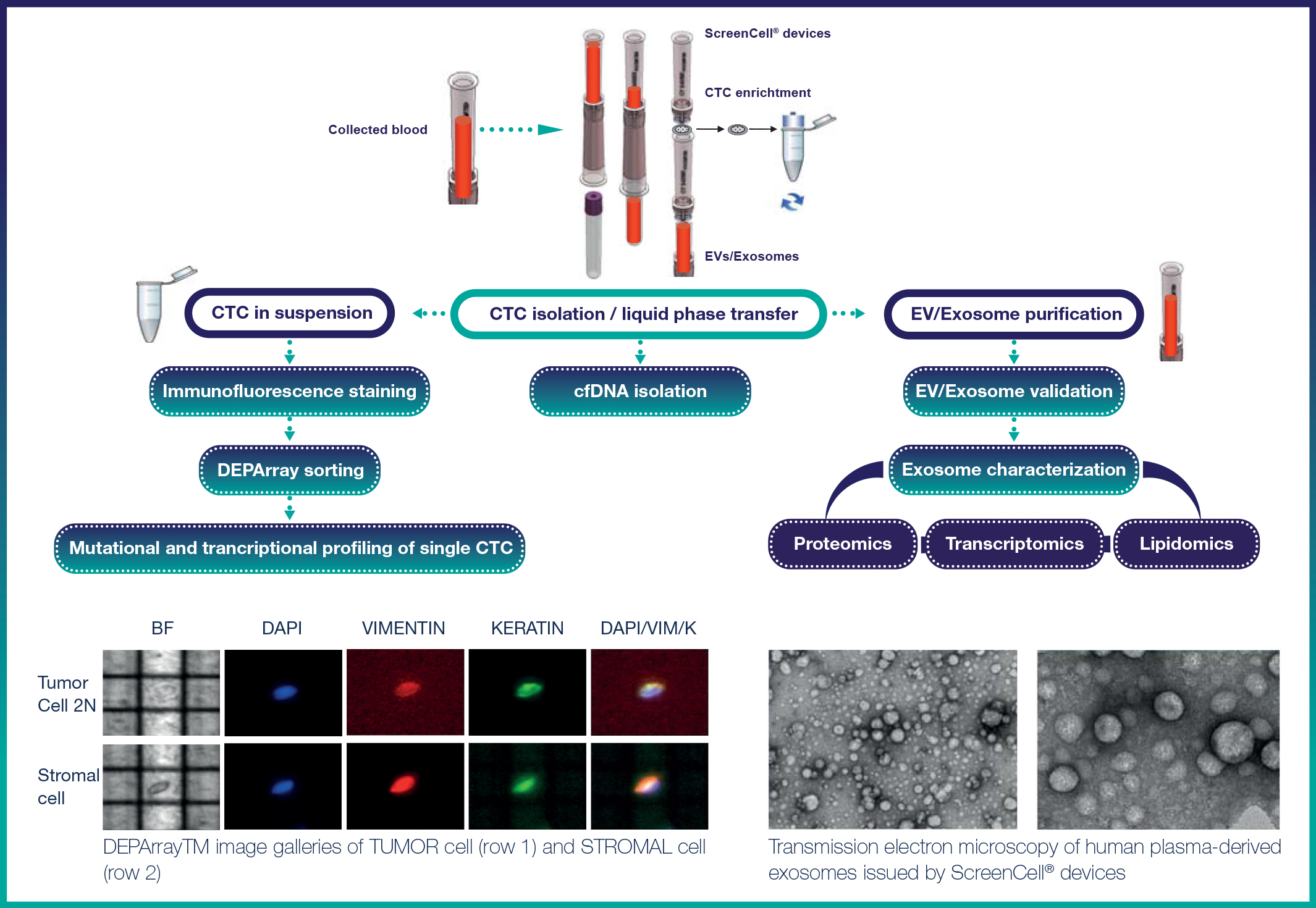Other techniques of EVs isolation
Workflow in Exosome studies

Overview
Excilone offers an expertise in isolation of extracellular vesicles (EVs) and Exosomes, their characterization, and analysis of their nucleic acid (mRNA, miRNA, DNA), protein and lipid content
Proposed procedure in Exosome studies:
- Isolation of the extracellular vesicles and their subpopulations (exosomes, microvesicles, etc.)
- Morphological and morphometric validation of the EV sub-populations by Transmission Electron Microscopy (TEM) with negative staining
- Measurement of size distribution and particle concentration by DLS, NTA or TRPS
- Determination of the EV/Exosome protein concentration
- Detection of the specific EV/Exosome protein markers by Western blotting and ELISA
- Analysis of exosome protein content by LC-MS/MS approach and nucleic acid composition (mRNA, miRNA) by NGS and RT-PCR
- Feasibility study
EVs origin
- Biological fluids (blood serum/plasma, urine, saliva, milk, and so on...)
- Cell culture supernatant
- Bacterial and parasite supernatants
Exosome isolation
Context
Exosomes are extracellular vesicles (EVs) of diameter within the range of 30-100nm, that are formed via inward budding of endosomal membranes resulting in formation of multivesicular bodies and released from the cell after fusion of multi-vesicular body with the plasma membrane.
Exosomes are produced by almost all cells in vivo and in vitro.
They are present in all biological fluids in various concentrations.
Expertise
Specific optimization steps in the isolation procedure are necessary due to great variability in the composition of different biological fluids.
Therefore a choice of the purification protocol depends on the biochemical composition and origin of the body fluid or cells considering the characteristics of EVs sub-populations and the sample size.
 B
B
Transmission electron microscopy with uranyl acetate staining of exosomes derived from bovine milk (A) and Stathylococcus aureus (B)
Fields of Application
- Cell to cell communication
- Immune responses
- Diagnostics/biomarkers
- Anti-tumor therapy
- Vaccines
- Inflammation and parasitic and bacterial infections
- Drug delivery
- Cardiovascular and metabolic diseases, cancer, etc...
Technical features
- Scientific expertise and technical experience in the research field of extracellular vesicles
- Very high purity of EVs/Exosomes with high recovery rate and functionality
- Absence of Exosome co-precipitation products and contaminants (protein and organic co-aggregates)
- The isolated EVs/Exosomes are suitable for different downstream analysis such as micro RNA/RNA profiling, proteomics, lipidomics and functional studies in vivo or in vitro.
CTC, Exosome and cfDNA isolation from blood
Workflow in CTC, Exosome and cfDNA isolation process

ScreenCell® Technology
ScreenCell® was set-up with the belief that just enumerating Circulating Tumor Cells (CTCs) without easily characterizing them was not enough to allow the early detection of a disease and to potentially follow-up the cancer progression. ScreenCell® has designed and produced a simple but revolutionary technology allowing the fast and effective isolation of CTCs for a better cellular and molecular characterization. Furthermore, extracellular vesicles/exosomes and cfDNA can be collected in parallel to CTC isolation for further purification and analysis of DNA, RNA and proteins.
DEPArray® single cell isolation
DEPArray® technology allows for the automatic recovery of rare cells from all types of cellular suspensions. Thanks to cell specific fluorescence labeling and morphological criteria, it is possible to select relevant cells including single cells, and to isolate and collect them individually into various supports. The cells may be collected individually or in "pool" from the pre-enriched sample.
